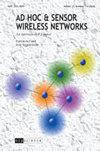Prototype of deployment of Federated Learning with IoT devices
IF 0.6
4区 计算机科学
Q4 COMPUTER SCIENCE, INFORMATION SYSTEMS
引用次数: 3
Abstract
In the age of technology, data is an increasingly important resource. This importance is growing in the field of Artificial Intelligence (AI), where sub fields such as Machine Learning (ML) need more and more data to achieve better results. Internet of Things (IoT) is the connection of sensors and smart objects to collect and exchange data, in addition to achieving many other tasks. A huge amount of the resource desired, data, is stored in mobile devices, sensors and other Internet of Things (IoT) devices, but remains there due to data protection restrictions. At the same time these devices do not have enough data or computational capacity to train good models. Moreover, transmitting, storing and processing all this data on a centralised server is problematic. Federated Learning (FL) provides an innovative solution that allows devices to learn in a collaborative way. More importantly, it accomplishes this without violating data protection laws. FL is currently growing, and there are several solutions that implement it. This article presents a prototype of a FL solution where the IoT devices used were raspberry pi boards. The results compare the performance of a solution of this type with those obtained in traditional approaches. In addition, the FL solution performance was tested in a hostile environment. A convolutional neural network (CNN) and a image data set were used. The results show the feasibility and usability of these techniques, although in many cases they do not reach the performance of traditional approaches.物联网设备部署联邦学习的原型
本文章由计算机程序翻译,如有差异,请以英文原文为准。
求助全文
约1分钟内获得全文
求助全文
来源期刊

Ad Hoc & Sensor Wireless Networks
工程技术-电信学
CiteScore
2.00
自引率
44.40%
发文量
0
审稿时长
8 months
期刊介绍:
Ad Hoc & Sensor Wireless Networks seeks to provide an opportunity for researchers from computer science, engineering and mathematical backgrounds to disseminate and exchange knowledge in the rapidly emerging field of ad hoc and sensor wireless networks. It will comprehensively cover physical, data-link, network and transport layers, as well as application, security, simulation and power management issues in sensor, local area, satellite, vehicular, personal, and mobile ad hoc networks.
 求助内容:
求助内容: 应助结果提醒方式:
应助结果提醒方式:


